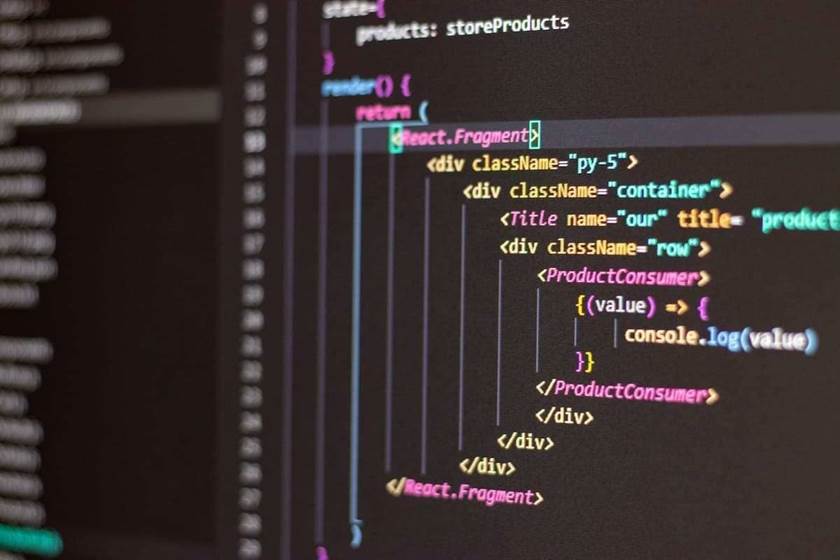This is the upper limit beyond which a course of is taken into account uncontrolled. You can use software tools like Minitab, Excel, or other statistical software packages to create a control chart. These tools will automate a lot of the above steps and allow you to simply create a management chart. Control charts effectively monitor defects and reduce rework prices by distinguishing normal course of variation from abnormal defects.
Control charts are indispensable in the toolkit of quality control, offering a scientific and visual strategy to monitoring process stability and identifying areas for enchancment. Control charts are an important tool in the Six Sigma methodology to monitor and management course of variation. Six Sigma is a data-driven strategy to course of improvement that goals to minimize defects and improve high quality by identifying and eliminating the sources of variation in a course of. The control chart helps to attain this by providing a visible illustration of the method information over time and highlighting any special causes of variation that could be present. Six Sigma management charts enable organizations to observe course of stability and make knowledgeable choices to improve product high quality. Understanding how these charts work is essential in using them effectively.
Breaking Work Into Consistent Sizes
The anticipated habits of a process on a Six Sigma chart is to have information factors fluctuating across the imply, with an equal variety of factors above and under. Additionally, if the data is in management, all data factors should fall within the higher and lower management limits of the chart. By monitoring and analyzing the trends and outliers in the data, control charts can provide useful insights into the efficiency of a process and establish areas for enchancment. Control charts enable steady course of monitoring to inform apart between frequent and particular trigger variations. This helps teams identify improvement alternatives and take prompt corrective actions to stabilize processes. The use of management limits additionally permits quantifying a process’s capability to satisfy specifications via parameters like Cp, Cpk, and Pp.
They present a data-driven strategy to make informed selections, track process stability over time, and reduce defects by removing assignable causes of variation. As such, knowledge must be usually distributed (or transformed) when using control charts, or the chart could sign an unexpectedly excessive rate of false alarms. Process capability research do examine the connection between the pure process limits (the management limits) and specifications, nevertheless. It is more appropriate to say that the management charts are the graphical system for Statistical Process Monitoring (SPM). Traditional management charts are principally designed to observe process parameters when the underlying type of the method distributions are known.
Plus, there are heaps of choices for locating a statistician or software program to select the right kind of chart and do the mathematics for you. Selecting the correct Six Sigma control chart requires cautious consideration of the specific traits of the information and the intended use of the chart. One must contemplate the sort of information being collected, the frequency of information collection, and the purpose of the chart. The U Chart, or the Unit Chart, is used to research the number of defects per unit in a sample. Daniel Croft is a seasoned steady enchancment manager with a Black Belt in Lean Six Sigma.
Yes, based on d2, where d2 is a control chart constant that is dependent upon subgroup measurement. Nave is a software that integrates with Jira, Trello, Asana and other tools to construct visualizations for cycles, additionally generally referred to as sprints. While this tool does not particularly construct a management chart visualization, its Cycle Time Scatterplot and Due Date Performance Chart are very related tools. Providing this kind of estimate to stakeholders, as long as it aligns together with your past efficiency and is accurate, can build trust.
Chart Details
In this complete guide, we’ll delve into the several varieties of management charts, tips on how to interpret them, tips on how to use them to make data-driven selections, and how to become a Lean Six Sigma professional. This permits organizations to deliver consistent quality products and services to their customers. Control charts additionally provide historic information on course of performance, which is effective for quality audits. Control charts are one of the most necessary high quality instruments for statistical course of management and quality management. By analyzing the place and distribution of points inside the management limits, necessary insights about process variation can be gained.
- Any deviations from the control limits indicate the process is behaving unexpectedly and corrective actions must be taken.
- Here, the method isn’t in statistical management and produces unpredictable ranges of nonconformance.
- For example, if knowledge factors are too close to the control limits, it signifies the method will not be succesful.
- Control charts are used as a way to display the efficiency of a process over time.
- However, unless you have a background in statistics or high quality control, you could have never used one earlier than and should not understand how they can help with product supply.
It is used when the information is binary (conforming or nonconforming), and the sample dimension is large. Between-subgroup variation is represented by the difference in subgroup averages. Used when every unit may be thought of cross or fail – regardless definition control chart of the variety of defects – a p-chart reveals the number of tracked failures (np) divided by the number of whole items (n). Once the impact of any out-of-control factors is removed from the MR chart, have a look at the I chart.
Control Charts: Every Little Thing You Have To Know
Additionally, even if points are inside the management limits, sure patterns, corresponding to constant upward or downward tendencies, cycles, or too much clustering, can signal underlying points. These patterns would possibly level to potential areas for course of improvement, highlighting the necessity for further analysis to know and address the foundation causes. Next, we have to determine the management limits (boundaries of expected course of variation). If you aren’t positive how to calculate the usual deviation, check out our commonplace deviation guide, as it is key to creating and understanding management charts.

A control chart, when utilized to identify outliers within the course of, could be helpful in understanding the place there could also be gaps in the process or if work is not being broken down into small enough pieces. However, as the process becomes more predictable, and the range of time across points turns into tighter, it becomes simple to foretell a ranged estimate. If the average period of time that it takes to complete a bit of labor is consistently three to six weeks, the group will be predictably delivering work each three to six weeks. Looking at information in a control chart tells you if your process – whatever you’re doing that generates the data – is stable or not.
Organizations that leverage management charts for process optimization can anticipate important advantages like improved productivity, lower costs, enhanced customer satisfaction, and elevated profitability. Control charts play an important https://www.globalcloudteam.com/ position in continuous process improvement methodologies like Six Sigma. They facilitate data-driven decision-making by revealing points like shifts, cycles, or developments within the manufacturing course of.
Control charts are used to plot knowledge in opposition to time, allowing organizations to detect variations in course of efficiency. By analyzing these variations, companies can identify the basis causes of problems and implement corrective actions to improve the overall process and product quality. The major goal of utilizing a management chart in Six Sigma is to guarantee that a course of is in a state of statistical control. This signifies that the method is secure and predictable, and any variation is because of widespread causes inherent in the course of.
This helps determine if the method is secure and performing as meant or requires corrective motion. For instance, let’s say you wish to record the amount of time it takes to commute to work every day for a set number of days. Every day you measure the period of time it takes from the second you leave your own home until you pull into the parking lot.

The catch is, however, that your management chart will have to have a tight coupling between the rolling common line and your work gadgets. Under the class of specific defects category, we use two types of Control charts – C and U. The variation could be classified as common cause variation, which is due to normal inherent causes in the system, or particular cause variation, which arises due to assignable causes. The subsequent step is to ascertain a baseline for the process’s performance. The imply is calculated by adding the entire information points and dividing by the variety of knowledge points. This line will then be used as a reference point to match particular person knowledge factors and point out the common efficiency of the method.
The center line is calculated because the mean of sample or subgroup averages. It serves as a reference to determine whether the process average is shifting up or down over time. The heart line, also referred to as the imply line, represents the typical or anticipated value of the quality characteristic being measured. The I-MR chart is used to watch discrete or attribute-type data where the outcome can solely be one of two prospects (e.g. defect/no defect).
Components Of A Control Chart
The NP Chart is just like the P Chart but is used when the sample size is fixed. The between and inside analyses present a helpful graphical illustration while additionally offering the power to assess stability that ANOVA lacks. This web site is using a safety service to protect itself from on-line assaults. There are several actions that could set off this block together with submitting a sure word or phrase, a SQL command or malformed information. As beforehand stated, noise can’t all the time be averted because it’s a natural variation that we should accept and work with.

